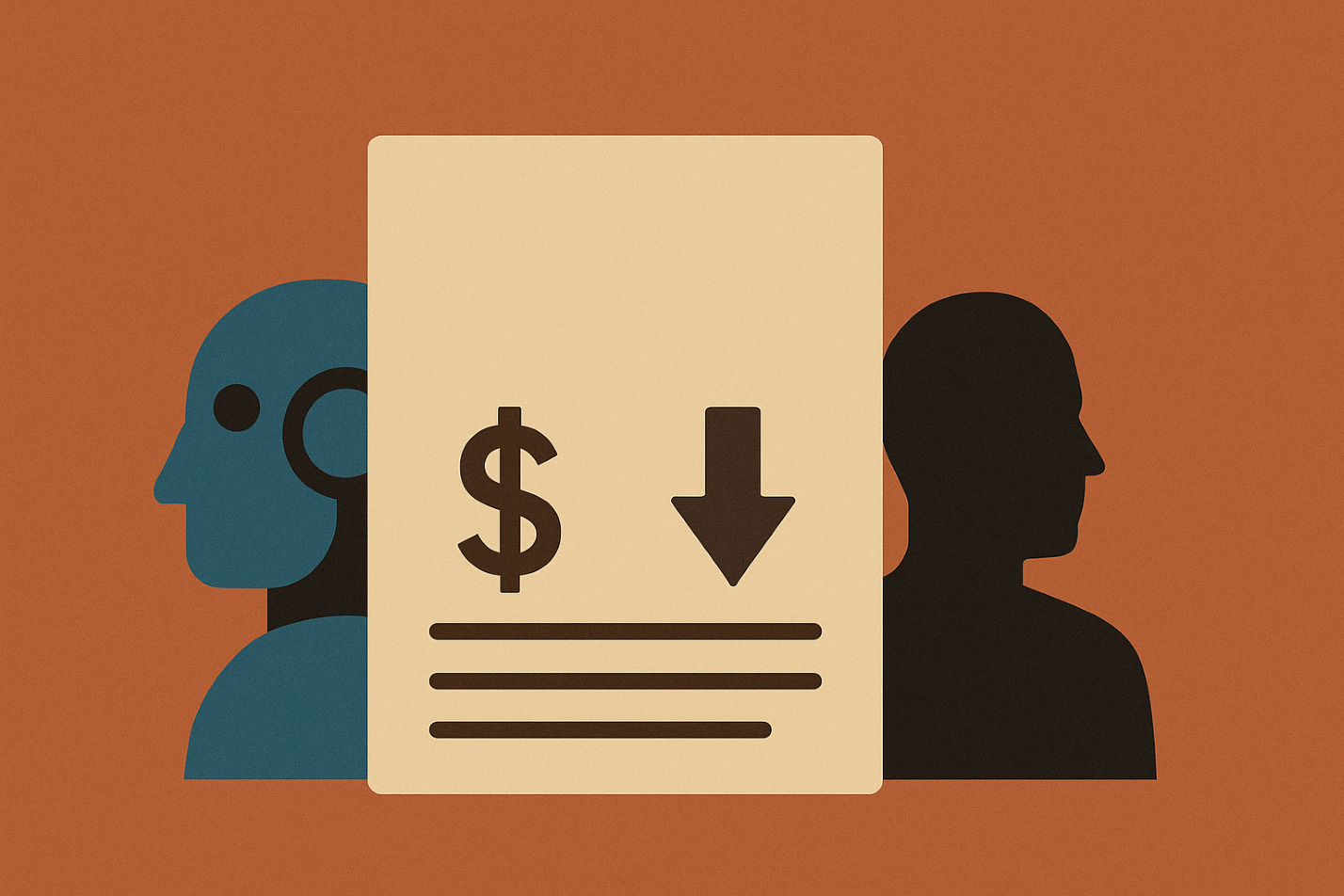AI’s Quiet Coup: Why Workers Must Come First
AI isn’t just about robots, it’s about power. As machines replace human labor, the real question is who gains control and who gets left behind.
কৃত্রিম বুদ্ধিমত্তার শঙ্কা শুধু রোবটে সীমাবদ্ধ নয়; এটি অর্থনীতি ও গণতন্ত্রে মানুষের ভূমিকা কমিয়ে দিচ্ছে। প্রযুক্তি যদি শ্রম বাদ দিয়ে শুধু মুনাফাকেই প্রাধান্য দেয়, তবে বৈষম্য ও ক্ষমতার কেন্দ্রীকরণ আরও বাড়বে।
The scariest thing about artificial intelligence (AI) isn’t a robot uprising, but a balance sheet. When AI is built to replace human work rather than amplify it, the rewards flow to those who own the data, chips, and algorithms. The losses fall on workers whose wages, bargaining power, and dignity erode. Stanford economist Erik Brynjolfsson framed this dynamic as the “Turing Trap”: societies that celebrate clever machines but forget the people they displace.
Augmentation vs. substitution
We have lived the virtuous version of technological change. Tractors helped farmers cultivate more food. X-rays helped doctors see what the eyes could not. Software helps teachers prepare lessons more efficiently. In each case, humans became more productive and indispensable. Life standards improved because technology amplified human contribution.
But when machines are designed as direct substitutes, “do what the human does, just cheaper,” the story changes. Prosperity narrows, and power concentrates in fewer hands. In that world, the public doesn’t negotiate with millions of employers; it negotiates with a handful of firms.
Why the trap is tempting
Three groups make the Turing Trap appealing: engineers chase benchmarks that mimic humans, pass the test, and beat the demo. Managers prefer quick cost-cutting through automation over the harder work of redesigning organizations. And policymakers tilt the field: wages are taxed every pay period, while capital income is favored, and “scaling without workers” is rewarded. In effect, our tax code penalizes hiring people and subsidizes replacing them.
This isn’t destiny, it’s a choice, and it can be reversed.
A progressive agenda for AI
A progressive agenda for AI should follow a simple principle: make augmentation the default and make concentration the exception. That begins with rebalancing the tax code. Labor and capital should be treated equally, ending the perverse incentives that make it cheaper to buy a robot than hire a person. Expanding the Earned Income Tax Credit (EITC) and creating a Learning EITC that workers can draw on for reskilling throughout their careers would put real money and flexibility in the hands of workers. Incentives should tilt toward AI systems that demonstrably raise frontline productivity, while tax breaks for technologies whose only ‘innovation’ is headcount reduction should be phased out.
Equally important is investing in people at the scale of the hype. For every dollar firms spend on machine learning, they need multiples in training, redesign, and process change. Public policy should match that reality: regional reskilling guarantees tied to local employers, sectoral training funds run by labor and industry, and wage insurance that cushions transitions without locking people out of growth sectors. If governments can subsidize semiconductor fabs, they can underwrite human skills.
The agenda must also confront monopoly power. AI advantages cluster where data, compute, and distribution intersect. Antitrust enforcement should adapt by scrutinizing exclusive data deals, predatory pricing, and acquisitions of emerging competitors. Downstream, workers should gain bargaining rights over algorithmic scheduling, pay-setting, and monitoring. If models work, workers must shape models.
Finally, democratic guardrails are essential. Any AI system used in hiring, lending, healthcare, education, or criminal justice should undergo independent audits, publishing its purpose, testing for bias, explaining error trade-offs, and guaranteeing a right to human review. Transparency is not anti-innovation; it is how democracies govern powerful systems. And suppose communities provide the behavioral raw material that fuels AI. In that case, they deserve returns through data cooperatives or public trusts, with revenues invested in public goods like childcare, broadband, and local colleges.
Why this matters
The stakes are larger than jobs. When know-how resides in millions of human heads, power is decentralized. When it is codified into a few proprietary models, power can be owned, traded, and concentrated. Justice Louis Brandeis’s century-old warning feels fresh today: “We may have democracy, or we may have wealth concentrated in the hands of a few, but we can’t have both.”
This doesn’t mean freezing technology. It means steering it. In health care, the goal shouldn’t be replacing the radiologist; it should be building tools that detect more cancers while giving doctors more time with patients. In schools, the aim shouldn’t be chatbot teachers; it should be diagnostic tools and support that free teachers to focus on mentoring.
The difference is subtle but profound. One pathway erases professions; the other renews them.
A choice, not a fate
AI’s future is not predestined. It will be shaped by the rules we write and the incentives we set. We can continue subsidizing displacement and watch power concentrate, or we can demand augmentation and build an economy where technology makes people matter more.
AI doesn’t have to take our jobs or our democracy. But without deliberate policy, it could do both.
About the Author:
Shahin Hossain is a researcher on artificial intelligence and education at the University of Maryland, Baltimore County. His work explores the intersection of technology, labor, and democratic governance. He can be reached at shahinh1@umbc.edu
Disclaimer: The views expressed in this article are the author’s own and do not necessarily reflect The Insighta’s editorial stance. However, any errors in the stated facts or figures may be corrected if supported by verifiable evidence.



